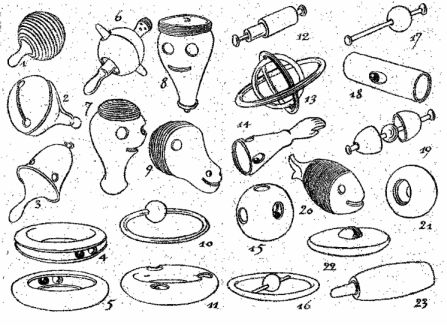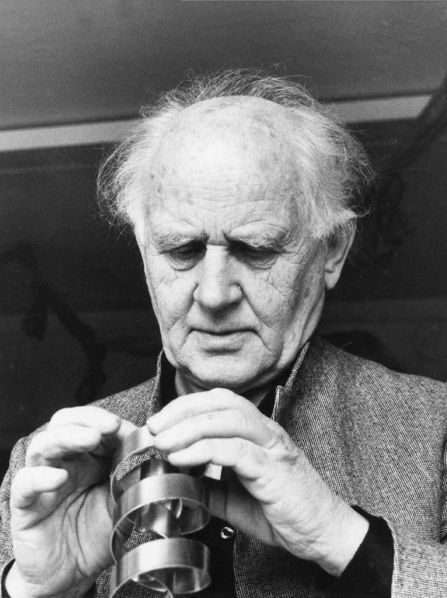

2015-05-29
Greiflinge
ALLBEDEUT, by Hugo Kükelhaus
For the German architect, artists and philosopher Hugo Kükelhaus (1900-1984), these wooden rattles were not just toys, but objects that facilitated young babies and children in the development of their skills and talents.
Kükelhaus believed that sensory experiences played a vital part in the development of talents. Especially young children had to be stimulated to activate their slumbering senses and abilities, most importantly the sense of touch. For that reason he designed Allbedeut: a series of wooden ‘Greiflinge’ in elementary forms. Allbedeut was a consciously chosen name: Kükelhaus wanted to express that the elementary forms of his toys can gather all possible meanings for the playing child.
The design of the series was inspired by the work of pedagogues like Erika Hoffman and William Stern. Because babies initially can only differentiate between light and dark contrasts, and hardly between different colours, Ku?kelhaus used the contrasts of the different types of wood.
At first, Allbedeut consisted of seven different rattles. Thanks to the success of the series, the number of different rattles increased in the late 1930s. Kükelhaus turned out to be a real pioneer: his ‘Greiflinge’ remain popular with children and adults until today. There’s no doubt that their timeless design and the use of sustainable material have greatly contributed to their success.
Sources:
www.hugo-kuekelhaus.de
Literature:
Münch, J. Hugo Kükelhaus und das Spielzeug Allbedeut. (Soest 1997).
Go to object details inv. Nr. 0733
For the German architect, artists and philosopher Hugo Kükelhaus (1900-1984), these wooden rattles were not just toys, but objects that facilitated young babies and children in the development of their skills and talents.
Kükelhaus believed that sensory experiences played a vital part in the development of talents. Especially young children had to be stimulated to activate their slumbering senses and abilities, most importantly the sense of touch. For that reason he designed Allbedeut: a series of wooden ‘Greiflinge’ in elementary forms. Allbedeut was a consciously chosen name: Kükelhaus wanted to express that the elementary forms of his toys can gather all possible meanings for the playing child.
The design of the series was inspired by the work of pedagogues like Erika Hoffman and William Stern. Because babies initially can only differentiate between light and dark contrasts, and hardly between different colours, Ku?kelhaus used the contrasts of the different types of wood.
At first, Allbedeut consisted of seven different rattles. Thanks to the success of the series, the number of different rattles increased in the late 1930s. Kükelhaus turned out to be a real pioneer: his ‘Greiflinge’ remain popular with children and adults until today. There’s no doubt that their timeless design and the use of sustainable material have greatly contributed to their success.
Sources:
www.hugo-kuekelhaus.de
Literature:
Münch, J. Hugo Kükelhaus und das Spielzeug Allbedeut. (Soest 1997).
Go to object details inv. Nr. 0733



